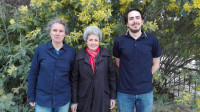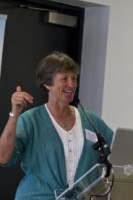Natural Catastrophes
Finance, Investment & Risk Management
Earthquakes & Seismic Hazards
Economic Loss & Disaster Risk Financing
Joint Research Initiative
France
2016.10.31
Increasing the reliability of seismic loss estimates to help decision-making
Bridging the gap between the geoscience and loss assessment communities
To supplement this important step towards better quantification of uncertainties in seismic loss estimates, the JRI also aims to come up with a new approach to enable the correct propagation of these uncertainties in all steps of the computations and consider them in the outcome results. Moreover, visualisation tools will be developed by the JRI teams to help both the geoscience community to identify the relevant data that should be collected to reduce epistemic uncertainties and the risk community by identifying where the uncertainties in hazard models are coming from and thus help in the decision-making process.
To avoid the potentially devastating consequences of badly informed decision-making, creating a dialog between the geoscience and risk communities is paramount. In joining forces, the ENS – IRSN team and the AXA team aim to bridge the gap and provide each other with mutual insight on how to improve estimations and keep uncertainties in the loop. In this sense, the AXA Joint Research Initiative has the potential to significantly contribute to the improvement of seismic hazard mitigation.

Hélène
LYON-CAEN
Institution
Ecole Normale Supérieure
Country
France
Nationality
French
Related articles
Climate Change
Finance, Investment & Risk Management
Societal Challenges
Climate Adaptation & Resilience
Insurance & Risk Management
Environmental Justice
Civil Society & Governance
AXA Project
Italy
AXA Research Lab on Climate Change, Risk and Justice
In response to three research questions: How can the private and financial sectors contribute to a just transition to a... Read more

Gianfranco
PELLEGRINO
Luiss Guido Carli University
Climate Change
Finance, Investment & Risk Management
Climate Adaptation & Resilience
Sustainable Finance
Economic Loss & Disaster Risk Financing
Greenhouse Gases Emissions
AXA Outreach
Netherlands
Regional Climate Change Conference on Climate Science, Adaptation & Financing
The AXA Research Fund will support the Regional Climate Change Conference (RCCC), an innovative annual event, which will take place... Read more

Roshanka
RANASINGHE

